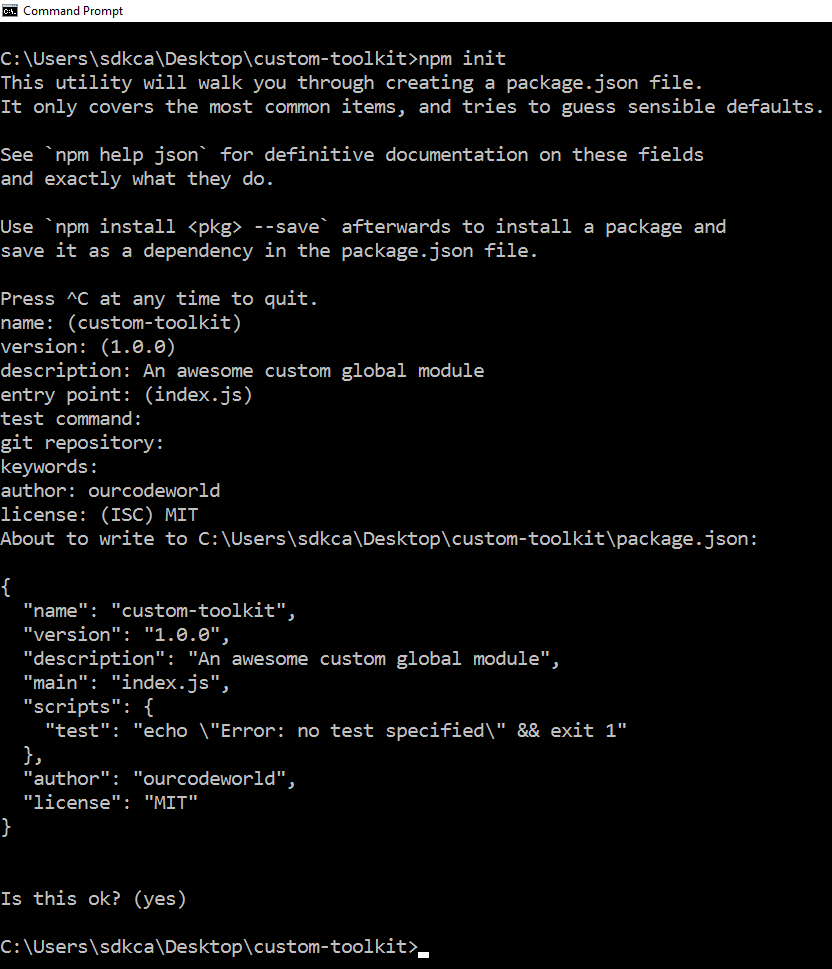
- #Where npm install modules how to
- #Where npm install modules install
- #Where npm install modules download
#Where npm install modules install
The NPM program is installed on your computer when you install Node.js.
#Where npm install modules download
hosts thousands of free packages to download and use.

If you happen to know easier and appropriate way, you are more than welcome to describe it in the comments below. NPM is a package manager for Node.js packages, or modules if you like. But I do not know any other way so, this should work for you too. Dependencies are hoisted, meaning they get installed in the root nodemodules folder. cd /usr/local/lib/nodemodules/ ls SAMPLE OUTPUT angular npm. So to confirm you should cd into nodemodules and list the directory. I am sure there is easier way to do all this and the way I did may not be the appropriate way, rather it is not. Now, when you run npm install in a multi-package repository, npms dependency tree manager is smart enough to scan your folders looking for all dependencies to install. So given that npm is a NODE package itself, it is installed in the same location as other packages ( EUREKA ). This latest version can be found out by running npm info express version on cmd.Ĭd into (go into) that created package folder and run npm install -g (-g installs it globally) The problem is that you have a system path pointing to a user install. Copy paste all the folders under this node_modules to C:\Program Files\nodejs\node modules\npm\nodemodules.Īdd entry of the dependencies (of the packages you want to install in the package.json under C:\Program Files\nodejs\node_modules\npm\package.json as this global install prefix logic is seriously flawed, and I don’t see a fix. Run command npm install \AppDate\Roaming\npm\nodemodules. Make sure your PATH environment variable points to the right location of nodejs, typically C:\Program Files\nodejs.īack to cmd, cd into (go to) C:\Program Files\nodejs\node modules\npm\nodemodules I am not sure exactly what part of my steps fixed it, but if you have these problems, worth trying! Joe Zimmermann details the problems that can arise when your project depends on globally installed npm modules, as well as what you can do to avoid them. I followed a few logical steps and now it works. Example: Let the path where your local module stored is C:\Users\engineer\Desktop\package.
While executing "npm install express" and then "npm install" it always threw me an error saying that the dependencies cannot be read. We need to provideIf you are trying to install nom packages on Windows, you will face all sorts of problems. NODE SINCE VERSIONS > 0.6 INSTALL NPM ALONG WITH ITSELF

Here's an example of how these fields would look in a package.UPDATE - NO NEED TO FOLLOW THIS TIP NOW. This metadata helps identify the project and acts as a baseline for users and contributors to get information about the project. Inside a package.json, you'll almost always find metadata specific to the project - no matter if it's a web application, Node.js module, or even just a plain JavaScirpt library. Let's break down the core parts of a typical package.json file: Specific Metadata: name, version, description, license, and keywords What is a package.json file?Īt its simplest, a package.json file can be described as a manifest of your project that includes the packages and applications it depends on, information about its unique source control, and specific metadata like the project's name, description, and author. An Absolute Beginner's Guide to package.jsonĪs a general rule, any project that's using Node.js will need to have a package.json file. Really understanding npm as a tool, understanding the core concepts, can be something that's difficult for a beginner - I spent many hours just trying to figure out small details that would seem minor or be taken for granted by others.Īs such, I've written up a basic and detailed guide for understanding npm, for those who are entirely new to Node.js, npm, and the surrounding ecosystem. We can install our very first package with the npm install command (or npm i for short), followed by the name of the packages we want to add to our project. Now let’s talk about importing them into your project and making use of them.
#Where npm install modules how to
Recently, we’ve learned how to find and install npm packages. Learn how to import the module once you’ve installed it. Using npm effectively is a cornerstone of modern web development, no matter if it's exclusively with Node.js, as a package manager or build tool for the front-end, or even as a piece of workflows in other languages and on other platforms. Open source Node modules are very powerful as you can instantly get access to the functionality that you’d otherwise have to write yourself.


 0 kommentar(er)
0 kommentar(er)
